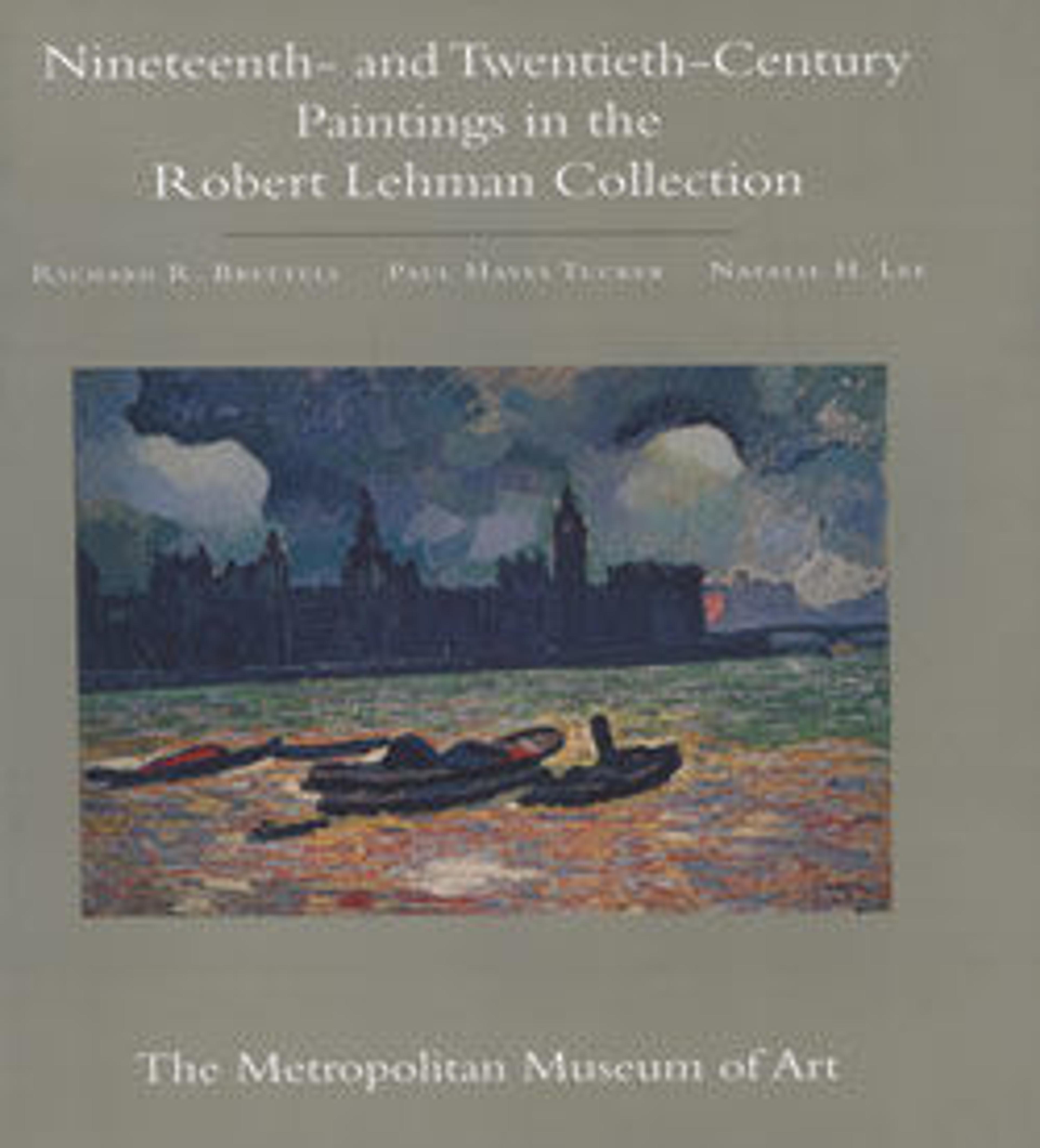The Rocky Path in the Morvan (Chemin des roches dans le Morvan)
Displayed in the Salon of 1869 in Paris, this impressive and variegated landscape was well-received in its day. Its size and style are considered unusual for the artist who typically favored more realistic landscapes on a diminutive scale. Painted in the Morvan region of central France, this landscape shows a rocky path that winds through a wooded river bank and is visited by leisurely figures. On the left, a woman knits upon one of the many imposing mottled rocks in the foreground. As she faces the distant scenery, the viewer is invited to the same view of a warmly lit, cascading rocky hillside beyond the river.
An avid landscape painter, Harpignies traveled to Italy in 1863 and observed the remarkable landscapes of Italian artists. He also took note of landscape artists in Paris such as Courbet, Pissarro, and Corot, all of whose varied styles Harpignies borrowed and appropriated in creating his own personal style, which he exemplifies in the execution of this painting.
An avid landscape painter, Harpignies traveled to Italy in 1863 and observed the remarkable landscapes of Italian artists. He also took note of landscape artists in Paris such as Courbet, Pissarro, and Corot, all of whose varied styles Harpignies borrowed and appropriated in creating his own personal style, which he exemplifies in the execution of this painting.
Artwork Details
- Title: The Rocky Path in the Morvan (Chemin des roches dans le Morvan)
- Artist: Henri-Joseph Harpignies (French, Valenciennes 1819–1916 Saint-Privé)
- Date: 1869
- Medium: Oil on canvas
- Dimensions: 37 5/8 x 63 1/4 in. (95.6 x 160.7 cm)
- Classification: Paintings
- Credit Line: Robert Lehman Collection, 1975
- Object Number: 1975.1.182
- Curatorial Department: The Robert Lehman Collection
More Artwork
Research Resources
The Met provides unparalleled resources for research and welcomes an international community of students and scholars. The Met's Open Access API is where creators and researchers can connect to the The Met collection. Open Access data and public domain images are available for unrestricted commercial and noncommercial use without permission or fee.
To request images under copyright and other restrictions, please use this Image Request form.
Feedback
We continue to research and examine historical and cultural context for objects in The Met collection. If you have comments or questions about this object record, please contact us using the form below. The Museum looks forward to receiving your comments.
